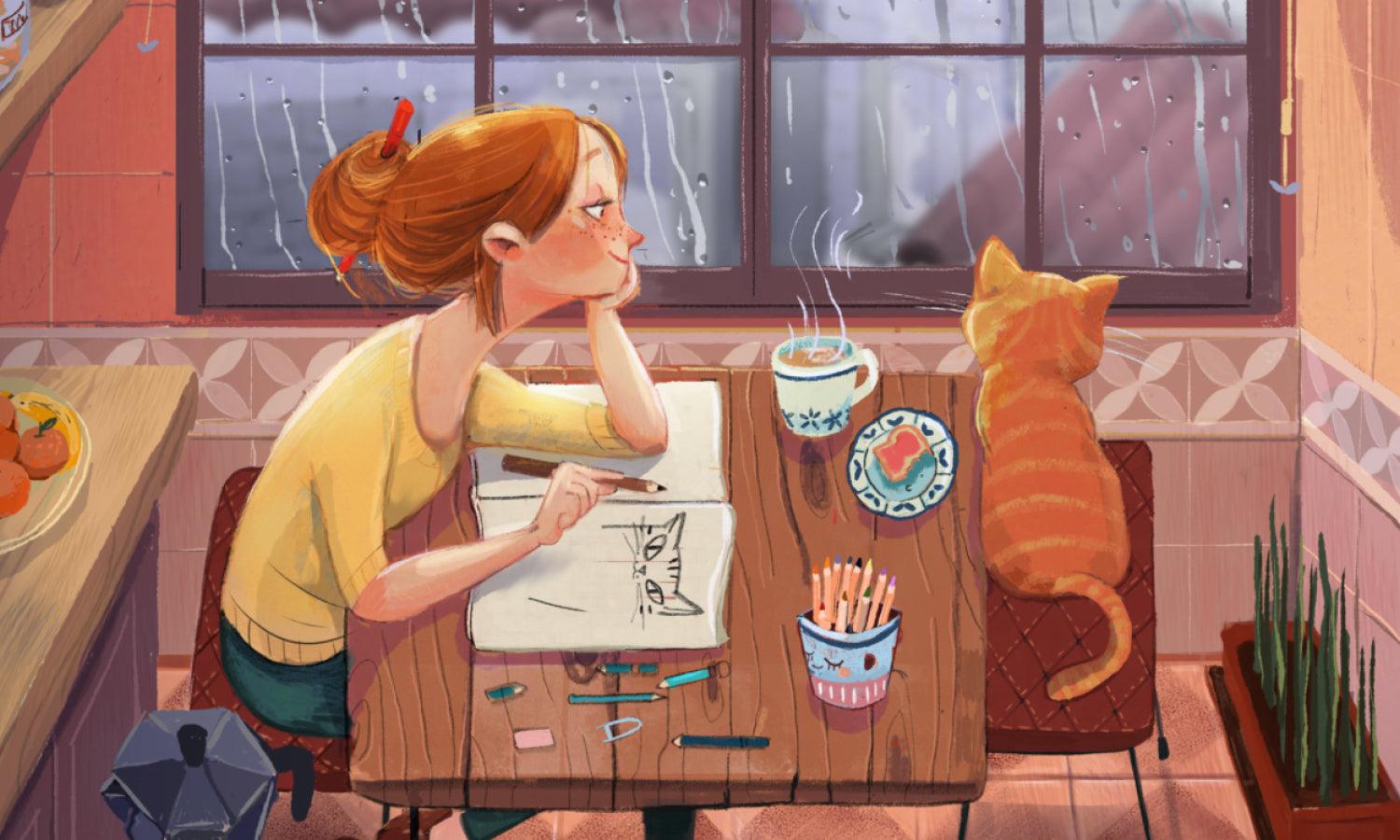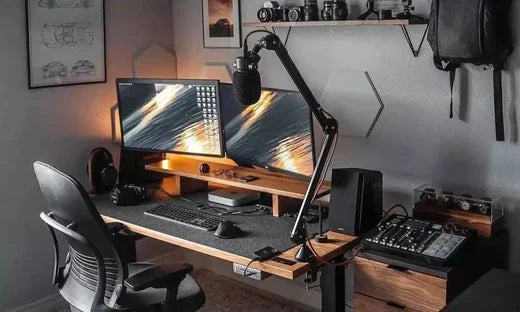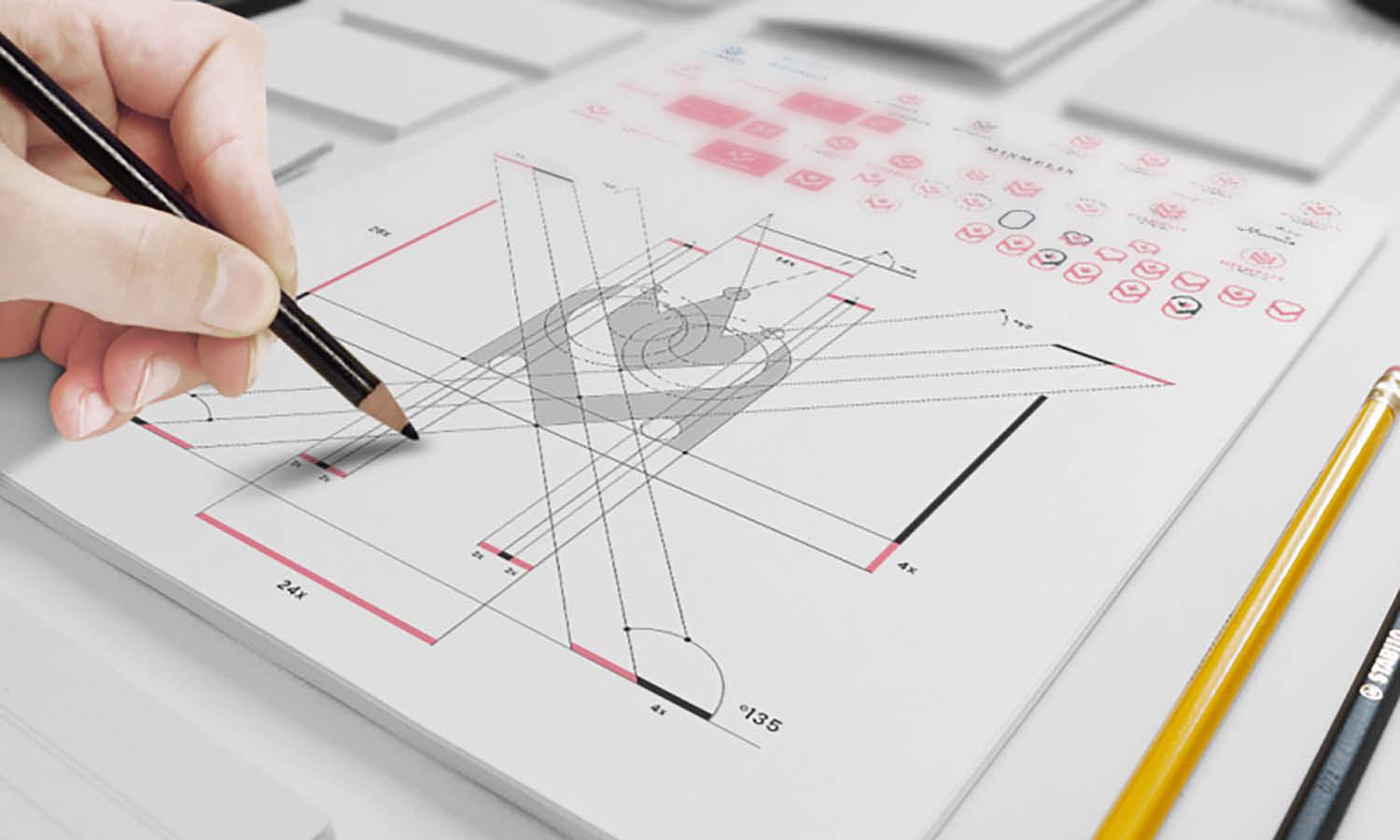Is It So Hard To Become A Graphic Designer?

Embarking on a career as a graphic designer is an exciting journey filled with creativity and opportunity, but it also presents its own set of challenges. This field combines art and technology, requiring a blend of creative flair and technical skills to succeed. Whether you're drawn to the vibrant world of digital media, the precision of corporate branding, or the innovation of user interfaces, graphic design offers a broad spectrum of opportunities. However, the path to becoming a proficient graphic designer is not just about learning software or understanding design principles; it involves a continuous process of skill enhancement, client interaction, and personal development.
In this article, we'll explore what it truly takes to become a successful graphic designer and dispel some common myths about the profession. We aim to provide a realistic view of the demands and rewards of a career in graphic design, helping aspiring designers make informed decisions about their future.
Understanding the Basics of Graphic Design
Graphic design is a dynamic field that blends creativity with practicality to communicate ideas visually. For aspiring graphic designers, understanding the fundamentals is crucial. This includes mastering the elements of design such as line, shape, color, space, and texture. Each element plays a specific role in creating a balanced and effective design. Color theory is another essential aspect, where designers learn the significance of colors and how they interact. This knowledge helps in creating designs that evoke the intended emotional response. Typography also plays a critical role, as the choice of fonts and how text is laid out can significantly impact the readability and appeal of a design.
Moreover, understanding the principles of composition and layout helps in organizing elements on a page to create a cohesive look that is aesthetically pleasing and functionally sound. By grounding themselves in these basics, graphic designers can produce works that are not only striking but also communicate the intended message effectively and efficiently. This foundational knowledge is the first step in the journey of becoming a proficient graphic designer.
Learning the Tools of the Trade
For graphic designers, proficiency in industry-standard software is essential. Adobe Photoshop, Illustrator, and InDesign are the cornerstone tools used by professionals worldwide. Photoshop excels in photo editing and complex digital paintings, making it invaluable for tasks requiring detailed image manipulation. Illustrator is renowned for its capability in creating and editing vector graphics, which are essential for logos, icons, and other designs that require scaling to different sizes without losing quality. InDesign is the preferred tool for layout design, used extensively for arranging text and images in magazines, brochures, and flyers.
Understanding these tools allows graphic designers to bring their creative visions to life with precision and professionalism. Moreover, familiarity with other tools like Sketch and Adobe XD is also beneficial, particularly for those venturing into digital design and user interface design. Continuous learning and adaptation to new technologies and software updates are part of the graphic designer's career, ensuring they remain relevant and competitive in the fast-evolving digital landscape.
Formal Education Options
Pursuing a formal education in graphic design can provide a structured path toward becoming a skilled graphic designer. Many universities, colleges, and design schools offer degrees in graphic design, visual communication, or related fields. These programs typically cover a broad spectrum of design principles, including theory, tools, and practical applications, helping students develop a comprehensive understanding of the discipline.
A formal education not only hones technical skills and artistic sensibilities but also enriches a designer's knowledge with courses on art history, digital media, and marketing, which are integral to developing a well-rounded perspective on design. Additionally, educational institutions often provide valuable resources such as access to industry-standard software, hands-on projects with real-world applications, and the opportunity for internships. These experiences are crucial for building a professional portfolio, which is essential for career advancement.
Networking opportunities with peers, faculty, and visiting professionals can also lead to collaborations and job opportunities post-graduation. While formal education is not the only route to a career in graphic design, it certainly equips aspiring designers with a solid foundation and competitive edge in the job market.

Keeping Up with Industry Trends
Staying current with industry trends is vital for any graphic designer who wants to remain competitive and relevant. The graphic design industry is dynamic, with evolving trends and technologies that continuously reshape how designers approach their work. Keeping abreast of these changes ensures that designers can adapt to new client expectations and maintain a fresh, innovative approach to their projects. Regularly reading design blogs, magazines, and journals such as "Smashing Magazine," "Behance," and "AIGA Eye on Design" can provide insights into the latest design trends and best practices.
Attending design conferences, webinars, and workshops also plays a critical role in continuous learning and professional development. Engaging with the design community on platforms like LinkedIn, Instagram, and design-specific forums can lead to discussions and insights that enrich a designer’s understanding and approach to projects.
Additionally, experimenting with new tools and techniques, participating in design challenges, and collaborating with other creatives can foster innovation and creativity. By investing in ongoing education and staying connected with the industry, graphic designers can continually enhance their skills and produce work that not only meets but exceeds the contemporary standards.
Cultivating Creativity
Creativity is the lifeblood of a graphic designer, essential for producing original and impactful designs. Cultivating creativity involves more than just waiting for inspiration; it requires active engagement and strategies to nurture innovative thinking. Graphic designers can expand their creative horizons by exploring various art forms, such as photography, painting, or sculpture, which can provide fresh perspectives and stimulate new ideas. Regularly participating in brainstorming sessions, even individually, can also be a useful technique to generate concepts and expand one’s creative thought processes.
Engaging with other designers and creatives in collaborative projects or community art events offers exposure to different styles and techniques, fostering creativity through diversity. Maintaining a ‘creative diary’ where ideas, sketches, and inspirations are noted can help designers capture fleeting ideas and later refine them into more developed concepts.
Additionally, setting aside time for personal projects can allow graphic designers to experiment freely without client constraints, pushing the boundaries of their creativity. Seeking feedback from peers and mentors can provide new insights and challenge a designer to think differently about their work.
Gaining Practical Experience
Gaining practical experience is crucial for any graphic designer looking to solidify their skills and prepare for professional challenges. Internships are a traditional and effective way to immerse oneself in the field, providing hands-on experience under the guidance of experienced professionals. Working in a design studio or agency allows aspiring designers to understand project workflows, client interactions, and the dynamics of collaborative design work.
Freelancing is another valuable avenue for experience, offering the opportunity to manage projects from start to finish, which can improve both design and business skills. Taking on pro bono work for non-profits or community organizations can also be beneficial, as it provides real-world experience while contributing to good causes. Participating in design competitions and challenges can push a designer’s limits and inspire innovation through competition.
Networking with other designers and professionals in the industry can lead to opportunities for shadowing or project collaborations, further expanding practical knowledge and skills. Building a diverse portfolio through these experiences is key, as it showcases a designer’s ability to handle various projects and client needs.
Building a Portfolio
For a graphic designer, a well-crafted portfolio is their most crucial marketing tool, serving as a visual resume that showcases their skills, style, and versatility. Building a compelling portfolio starts with selecting your strongest work that not only demonstrates your technical skills but also your problem-solving capabilities. Include a variety of projects that highlight different aspects of graphic design, such as logo design, branding, web design, and packaging. Each piece should include a brief description of the project context, your creative process, and the outcome, which helps to communicate your thought process and professionalism to potential employers or clients.
It's essential to tailor your portfolio to your target audience. For instance, if you aim to work in advertising, focus on campaigns and ad designs. For those more interested in digital experiences, showcase interactive and web-based projects. Keep your portfolio updated with your latest work and remove older pieces that no longer represent your best work.
In today's digital age, having an online portfolio is a must. Platforms like Behance, Adobe Portfolio, and personal websites allow you to reach a broader audience. Make sure your online presence is professional, easy to navigate, and fully responsive, as it often provides the first impression of your capabilities.

Handling Criticism
Handling criticism effectively is a vital skill for any graphic designer, as feedback is a constant throughout the design process. Criticism, whether from clients, peers, or supervisors, is not a reflection of personal failure but an opportunity to grow professionally and refine your work. Developing a thick skin and an open mind allows you to extract valuable insights from critiques without feeling discouraged.
When receiving feedback, listen actively and ask clarifying questions to fully understand the perspectives being offered. This approach not only shows your professionalism but also helps you grasp the intent behind the criticism, which can be crucial for making constructive revisions.
It’s important to remember that not all feedback may be useful. Evaluate the feedback critically—align it with your design goals and see if it enhances the effectiveness of your design. If you disagree with a critique, provide a reasoned response that explains your design choices, backed by design principles and objectives.
A proactive way to handle criticism is to seek it out at early stages of your projects. This can prevent significant revisions later on and help create a final product that meets or exceeds expectations.
Time Management Skills
Effective time management is crucial for graphic designers, who often face tight deadlines and multiple project demands simultaneously. Mastering the art of organizing your workload not only helps in meeting deadlines but also reduces stress, allowing for a more creative flow. Prioritization is key: start by listing all tasks and deadlines, then categorize them by urgency and importance. Tools like digital calendars, project management software, or even traditional planners can aid in keeping track of responsibilities and deadlines.
Breaking larger projects into smaller, manageable tasks can prevent feeling overwhelmed and help maintain focus. Setting realistic time frames for each task and including buffer periods for unexpected challenges or revisions is also essential. Use techniques like the Pomodoro Technique—working in short bursts with breaks—to maintain productivity without burnout.
Communication is a part of time management too. Keeping clients and team members updated on progress can help manage expectations and adjust timelines if necessary. Being transparent about your workload and setting clear boundaries regarding your availability can prevent last-minute rushes and ensure a healthy work-life balance.
Financial Uncertainty
Financial uncertainty is a common challenge for graphic designers, especially freelancers and those starting their own businesses. Unlike traditional salaried positions, the income of a freelance graphic designer can be irregular, making financial planning and management critical. To mitigate this, it’s essential to diversify your client base. Working with a variety of clients across different industries can provide a steadier income stream and reduce the risk of financial instability if one sector or client reduces their demand.
Effective budgeting is also vital. Designers should track both personal and business expenses to understand their financial flow and identify necessary adjustments. Building a financial cushion for slow periods can alleviate pressure and allow designers to select projects that truly align with their skills and interests, rather than just filling time.
Setting appropriate rates is another crucial aspect. Researching industry standards and transparently communicating your pricing structure can help in attracting clients who value your work and are willing to pay accordingly. Offering different pricing models, such as project-based fees, retainers, or hourly rates, can also cater to various client needs and help stabilize income.
Additionally, investing time in marketing your services effectively can lead to more consistent work. Utilizing social media, maintaining an up-to-date online portfolio, and networking within the industry are all strategies that can increase visibility and attract new clients.
Conclusion
Embarking on a career as a graphic designer is both challenging and rewarding, offering a unique blend of creativity and technical skill. By understanding the fundamentals of design and mastering essential tools, aspiring designers can build a strong foundation for a successful career. Continual learning and adapting to new trends are crucial in staying relevant in this ever-evolving field. Whether creating stunning visuals or solving complex design problems, graphic designers play a pivotal role in shaping the visual aspects of various media. With dedication and passion, the journey to becoming a skilled graphic designer can be a fulfilling and dynamic adventure.
Let Us Know What You Think!
Every information you read here are written and curated by Kreafolk's team, carefully pieced together with our creative community in mind. Did you enjoy our contents? Leave a comment below and share your thoughts. Cheers to more creative articles and inspirations!
















Leave a Comment